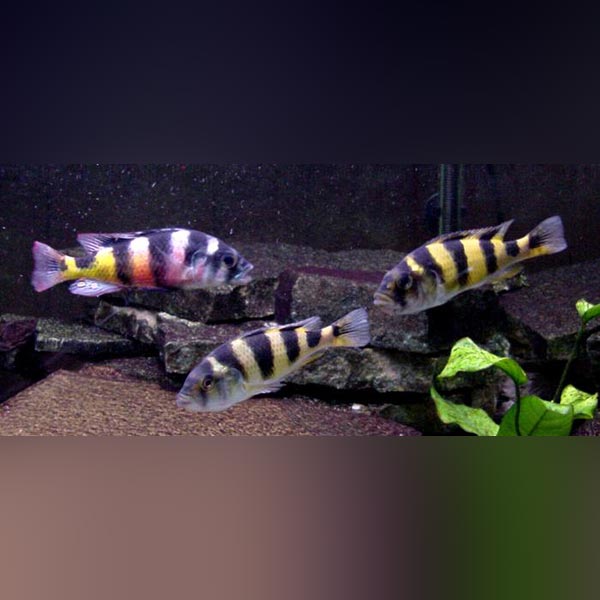

Red Devil Cichlids can also develop Head and Lateral Line Disease, or ‘hole-in-the-head’ disease. It can also be treated with copper-based medications. ICH is highly contagious and fatal, but it can be treated by increasing the tank temperature to 86 degrees Fahrenheit for about 3 days. Make sure every piece of gear is protected to prevent your fish from damaging it or hurting themselves.Ĭommon diseases: While there are no specific diseases that affect the Red Devil Cichlid, they are susceptible to diseases that commonly affect freshwater fish like ICH. Like other aggressive fish, Red Devil Cichlids may also attack exposed equipment. The tank needs to have moderate water movement.Īirstones are also recommended, as Red Devil Cichlids thrive in oxygenated water and the airstones will help their color vibrant. This is because Red Devil Cichlids are known to topple rocks if they are just sitting on top of the sand.ĭual filters are also recommended, and a traditional canister filter paired with a sump setup will also work well. You should also consider anchoring smaller rocks to the tank with fish-safe epoxy. You should also place all of your rocks firmly within the substrate at the bottom of the tank. In the wild, they often hang around crevices so they can easily hide when they sense danger, and they will mimic this behaviour in aquariums. Meanwhile, plants are not recommended as Red Devil Cichlids are known for wrecking any foliage, and when they dig they love to uproot plants.Īlso make sure to provide plenty of hiding spaces with rocks and wood. Gravel or tough substrate can be harmful to them. What to put in their tank: Preparation is crucial when it comes to setting up tanks for Red Devil Cichlids, as these fish tend to rearrange their environment.įine sand is recommended for the bottom of the tank, as Red Devil Cichlids like to dig. The ideal water temperature for a Red Devil Cichlid is 75 to 79 degrees Fahrenheit, while the pH level should be 6.5 to 7.5, and the water hardness should be 6 to 25 dGH. Major water condition problems can not only lead to health complications but prevent the fishes from growing. While you can adjust the water parameters slightly, you should try your best to stick to the following ranges. Water parameters: The key to keeping a Red Devil Cichlid healthy is top-quality water conditions. They are monogamous fish, meaning you can keep males and females together in most cases. Same species tanks: Despite doing better alone, you can keep Red Devil Cichlids in pairs.
Red zebra cichlid lifespan full#
But this can change as they grow older, and when they have reached full maturity they will be unwilling to share any tank space.Īs well as having a large tank, you will also want a tank with many hiding places and natural territory separations to avoid aggressive behaviour. Young Red Devil Cichlids are usually not so aggressive if they are raised in a tank with other Red Devil Cichlids.

They can be kept with other fish, as long as these fish are introduced early on in their lives. Tank mates: Because they’re aggressive, Red Devil Cichlids are usually kept alone. They’re avid swimmers and as they grow will quickly outgrow cramped tanks. This is because Red Devil Cichlids need plenty of space to roam. If you would like a breeding pair, they will need a tank that’s at least 125 gallons, while for multi-fish tanks you will probably need a tank that is 200 gallons or bigger. Tank size: Red Devil Cichlid are large fish, and a single fish will need at least a 55 gallon tank.

They were classified under the genus Cichlasoma, but they have since been classified under their own genus.īut despite their challenges, their stunning appearance, playfulness, and affectionate nature towards their owners make them a delight to keep. Red Devil Cichlids are usually found in Nicaraguan lakes, especially Lake Managua, Lake Nicaragua, and Lake Xiloa. They are certainly a handful! Not only are they aggressive to other fish, but they’re known to destroy anything they can get their teeth into. However, their name tells you a lot about them. They’re sure to put on a show for you, and can even beg for their food like a dog. They’re also one of the more loyal species of fish, developing bonds with their owners. The Red Devil Cichlid (or Amphilophus Labiatus) is a charismatic fish much loved by aquarists.
Red zebra cichlid lifespan how to#
Our guide will tell you everything you need to know about the Red Devil Cichlid and how to care for one so you’ll be prepared if you decide to add one to your tank.


 0 kommentar(er)
0 kommentar(er)
